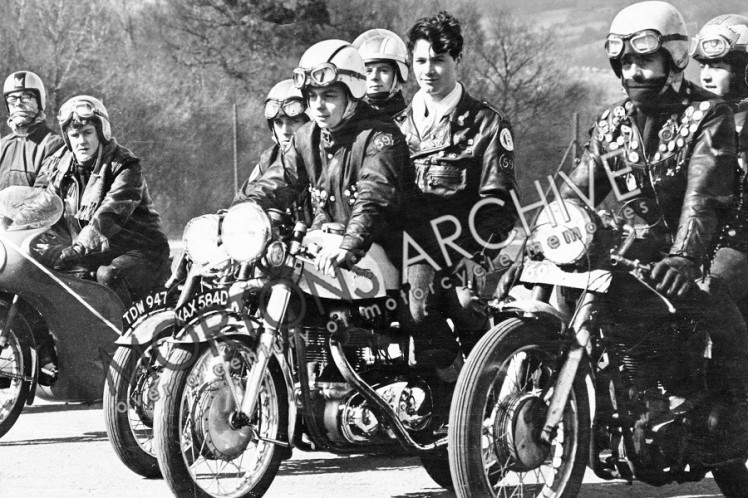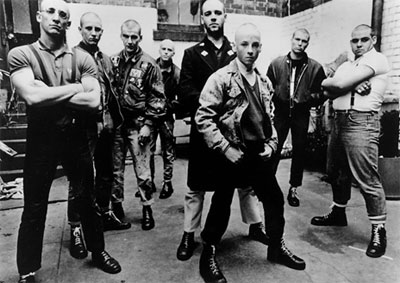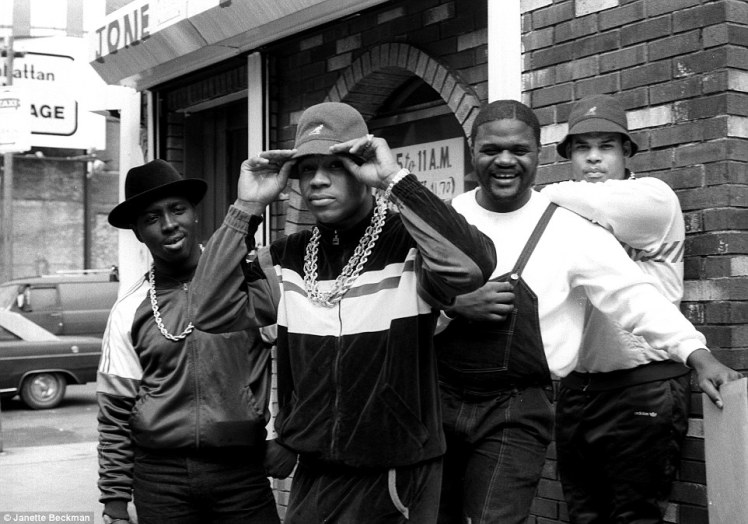Tasks
TASK 1: What is your context
- Consider what has brought you to where you are now at the outset of your degree in photography.
I always had an interest in photography, so I decided to study it and making a living career. I started off by doing a BTEC in Media and this pushed me even more to choose a photography course. I decided to go for a 2 years course in BTEC in photography and after that, I felt like I wanted to learn more and improve my skills on Fashion photography and Advertising so I decided I had to go to university to increase this knowledge. So I started looking for the right university that offered such a specific photography course as I did not want to do any artistic or darkroom photography and after searching so intensively Laura who is now doing the same course at PCA with me suggested I should check the BA commercial photography and by visiting the web page and reading information I thought it was what I was looking for and that’s how I ended up in this photography course.
- What has made you the person you are today?
My family and the environment I was raised up in and many events and situations I have encountered in my life have made me what I am today.
- What are the key moments/events/people that have formed you?
Moving from a country to another, different situations, family and friends, hard and good moments.
- Where did your interest in photography come from?
My dad had three cannon cameras, I can’t remember what types but I remember the Canon EOS 3000 and he used to take pictures of my mum, sister and me all the time, for every single event in our life, even for silly things like when my first tooth came out. So I guess seeing my dad taking pictures and developing them all the time created an interest in me. Around 2008 I went on a trip with the school and that’s when my dad gave me his camera to use and I remember my teachers were surprised of how big the camera looked on me and there’s when one of my teachers started giving me lots of photography magazines to read. I did read them but I only had a basic interest in photography.
- What do want/expect to gain from studying a degree in photography?
Improve my skills and be very confident. To be able to have opportunities and open new doors by the time I finish.
- What has influenced you to make this life choice?
I had to motivate myself to finally try to be serious about having a career in photography. Thinking about my future pushed me to make this choice.
- Do you have a specific interest or outlook on life that stems from your past or yourupbringing?
Something I have learnt with time is that no matter how bad you are doing in something if you focus on yourself and motivate yourself you will be able to achieve a good result.
- At this point in time, what kind of image-maker do you want to be?
When I first started the course I was not sure whether I wanted to get into advertising or fashion photography but after completing an advertising assignment and working on a fashion one I had to admit that I feel much confident and having fun in doing the fashion
Research and ‘Read’ three photographic images taken by established photographers (historical or contemporary)
- One image should clearly define it’s intent through the image alone:

This is a photo by Don McCullin, he is a well-known war photographer and through his photographs, he made the rest of the world aware of what it means to be in war. He used to concentrate more on soldiers and other war components in his photographs but when he took this photo was the time when decided to actually show the people who are really affected by the war, the civilians, as he describes them as ‘the people who were picking up the real price of war’ and ‘always the last people to be told that it was coming to them’. Such an image does not need much explanation, it talks on its own, it is about a woman whose husband has just been killed. The face of the woman, full of pain and agony, the little boy crying, extending his hands toward the woman who is probably the mother, the other woman crying, it is a scene of collective anguish and although they are all in pain it seems they are all trying to comfort the woman as she is the main focus of the photo.
One should need clarification of intent through caption or other signs. (I.e. it may be part of a series and as such fails to convey it’s intent as a single image.

This is another photograph by Don McCullin of a US marine suffering severe shell shock waiting to be evacuated from the battle zone in 1968. In this photo, you clearly understand that it is about war and a soldier who is in a terrifying situation by the look of his face. However, is less straightforward than the previous image as this if you take his soldier clothes off and the weapon he is holding the soldier loses his identity. Also, he could be any soldier, anywhere in whatever situation but with a little bit of research, I was able to know a little bit of his identity, what was going on, where and when.
- Finally, one image should be one that needs further investigation to clearly understand it’s intent.
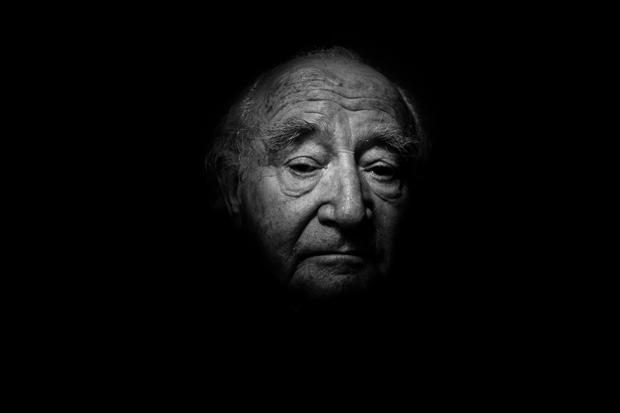
Unlike the first two photographs, this one is just the portrait of an elderly man, who could be anyone. A criminal? A soldier? A doctor? Or just an ordinary old man. This photo could tell us nothing but by knowing the reason behind it tells a lot. This portrait photographed by Maciek Nabrdalik is the portrait of Roman Kent Holocaust survivor. Now knowing who he is, when I look at the picture you have a different feel, I now understand why the black and white, why you can only see his face and it seems like he is surrounded by the dark and there’s only one key light showing not too much of his face and this could be portrayed his actual state of how he feels now after having such a past. He might still feel surrounded by his past even if he did survive it. I thought it was interesting to share what he said:
“I think you can divide the camp survivors into two categories. One group would say: ‘God wanted me to survive.’ And in this way their faith in God is stronger. On the other hand you have people who would say: ‘If God is what we believed he was, he must have been in Auschwitz. And how could he allow children, little children, to be killed? Where was God then?’
I believe in the goodness of men. I judge people not by their religion, but by who they are and how they act. And if we speak about religions, I would like to add one more to the Ten Commandments. The 11th commandment should be: ‘When you see evil, do something.’ Most evil things happen when people are bystanders, when they do nothing. And then evil can prevail even if it’s done by a small group of people. The Righteous are the moral example of what could have been done, but what the humankind failed to do.”
TASK 3
- Locate 2 photographic portraits, one historical, one contemporary. Provide a brief analysis of the images:
- Describe the images
- Consider the subject, styling, background, composition, lighting
- Interpret the images: Where might the image have been taken?
How would you read the image?
Is there any implied meaning?
What does the image say/reveal about the sitter?
Image 1
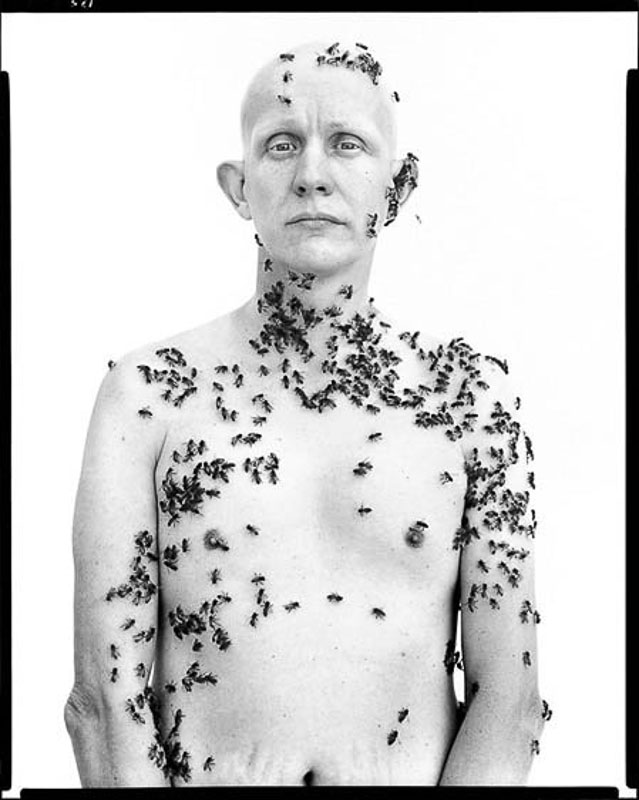
This portrait was taken by Richard Avedon in 1981, California. He was commissioned to take portraits of the people in West America. He focused on everyday working class subjects such as farmers, miners soiled in their work clothes etc. This project lasted five years. In this image there’s a naked man with bees all over his body, from the image I deduce he has something to do with bees as his facial expression looks very relaxed, not everyone would have such an expression in such a picture. In fact, he is Ronal Fischer a beekeeper. I don’t think there’s any implied meaning in this portrait, here Avedon is just revealing us what this man is into. Avedon used ambient light as all his portraits for American West are done outdoors with a very white and plain background and the subject is looking straight at the camera also he did not take an extreme close up of the subject face but a mid shot to include other features that say something about the subject.
Image 2
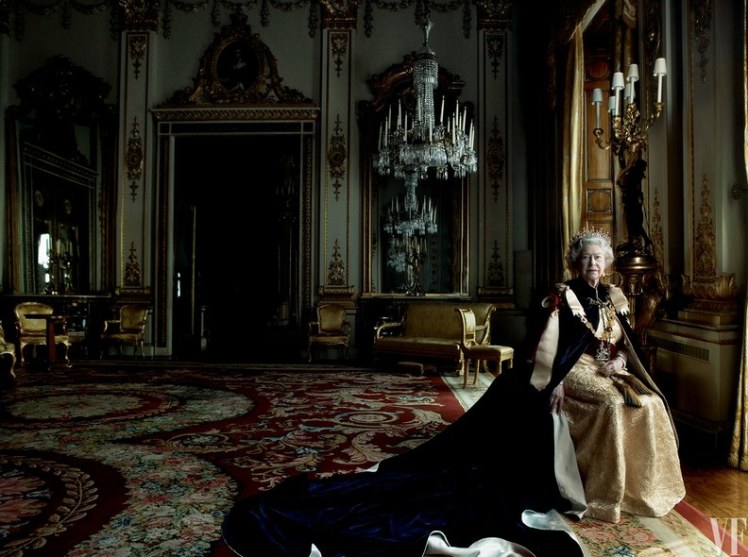
This is the Queen’s portrait by Annie Leibovitz at Buckingham Palace in 2007. Here we can see the Queen in the White Drawing Room, in her long rope and wear her crown in such a royal place. Seems like Annie L. did not want to make use of lots of lights as it looks like there’s only one key light which is daylight coming out from the window and the rest of the room is quite dark. She is very composed and not smiling. Analysing all these factors makes me think that she wanted to portray the seriousness, luxury and royalty of the Queen. I do not think she wanted to portray her as a simple funny lady. In fact, when Annie asked her if she could remove her crown for a “less dressy” pose, the Queen answered “Less dressy? What do you think this is?” and Annie giggles described her as being feisty and also states “She is a woman with a great sense of duty”.
TASK 4
- Locate one environmental/editorial portrait that you are particularly drawn to.
- Describe the image in terms of it’s formal characteristics (e.g. lighting, use of colour, composition)
- Consider the narrative of the image. What does the compositional content and the formal treatment that you have described, say about the person and the narrative?

This is an environmental portrait of a man sitting comfortably in his barber shop. Looking at this image I would say he used a very shallow depth of field as the guy is really in focus but the rest of the shop and the other two men at the back are blurred. I think the photographer used ambient light, but there’s a little highlight on his hair which shows that maybe the photographer has used flashlight. As I stated at the beginning because he is the main character of the image, his hairstyle, clothes and the way he is sitting comfortably would make me think he works there and this is his shop. However, at the same time I think it would have been more effective if the photographer had the man actually working and wearing the gown as the man in the back that would have said much more in a more direct way, whereas here he could be the owner but he could also be a client who just had his hair done and the newspaper he is holding makes him look like a client even more.
I would say this person is a carpenter or something to do with working with wood. Looking at the pose of the subject it’s quite a relaxed pose and I feel like he is happy to be showing his work and what he does for a living. Yet his face does show some seriousness to it, maybe he is serious about what he does or maybe that is just his natural face. Overall I think this is a good setup image and brings across and suggests what he does for a living.
TASK 5
- Locate 1 ‘Off the Page’, print advertisement
- Describe the imagery
- Consider the content, styling, background, composition, lighting, use of colours
- Interpret the Language
- Who is the Advertisement aimed at?
What is the ad saying, what is the proposition?
What is the key communication technique being used? Is there any symbolic language being used?
Is the ad directed at any of the levels within the hierarchy of needs?

This image is advertising the New Gucci Guilty fragrance for women. For this image, they used a very warm bright and shiny gold colour on it, which is representing the perfumes container. I’m guessing the photographer only used a beauty dish without any snoot or anything else at the back of the hair of the guy and the background are really dark. The styling and the composition of this photos make me deduce that there is an implied message that the photographer wants to get across because it looks like the main focus of the picture is the woman. The woman looks very dominant, could be because she has been placed slightly higher than the guy, she is looking straight into the camera whereas the guy is fully lost into her and also the fact that she is grabbing the guys head. This advertisement is aimed at women and from what I interpret it’s encouraging them to get this perfume as it will make their men feel more attracted to them and they’ll have power over their men. As I stated previously I think the composition and styling of this image are the key communications technique that has been used. As for symbolic language, I could say the red lipstick is being used because it has always been seen as a stamp of morality. And morality is related to temptation and sex, which are surely two evident elements in this image. This advertisement definitely has a place within the hierarchy of needs. It would be in the group of Biological and physiological needs (Basic Life Needs).

It’s interesting how in the advertisement of the same fragrance but for men, the man is now the main focus and he is dominant and they used the same communications techniques as they used in the other one, composition and styling but unlike the other one in this one the man is dominating, he is gazing right at the camera he is on top holding the woman.
TASK 6
Read a chapter of academic text relating to either the Language of Advertising or Representation in Advertising and the Media.
E.g.
Sturken, M., (2009) Practices of looking: An Introduction to Visual Culture OUP, USA Wells, L., (2015) Photography: A Critical Introduction (5th edition) Routledge, London
Write a short summary demonstrating your understanding of what you have read
TASK 7
Research the Advertising Standards Authority and the specifics of the ASA’s code.
The Advertising Standards Authority (ASA) is the UK’s independent regulator of advertising across all media. We apply the Advertising Codes, which are written by Committee of Advertising Practise (CAP)
- What are the guidelines that govern whether or not an advertisement is likely to be banned?
- Compliance: These are rules which relate to social responsibility and legality.
- Recognition of Advertising: Separation rules and content rules to make sure that ads are not mistaken for editorial.
- Misleading Advertising: It contains rules about evidence to prove claims; pricing; availability of products, comparisons, testimonials and more.
- Harm and offence Rules to make sure that ads do not cause any harm or serious offence.
- Children Rules for ads for children or featuring them. Includes rules about unsafe practices and sales promotions for children.
- Privacy Permissions for depicting or referring to someone in ads, including members of the public and those with a public profile.
- Political and controversial matters Clarification of when the Code applies to the political advertisement.
- Distance selling allows readers to buy without face-to-face contact with the seller.
- Environmental Claims Rules about making ‘green’ claims for products or services. Rules cover evidence, the clarity of claims and ‘life cycle’ of products.
- Prohibited categories products and services that are not permitted to be advertised on TV or radio at all.
- Medicines, medical devices, treatments and health Use of health professionals; they need to have evidence and has to be a very high level needed for medicinal claims; and a valid qualifications for those claiming to treat or offer advice;
- Weight control and slimming Rules for ads for weight control, slimming foodstuffs and aids, including exercise; diets, clinics and medicines.
- Food, food supplements and associated health or nutrition claims Rules relating to health and nutrition claims in foodstuffs; claims for vitamins and minerals; infant and follow on formula and food and soft drink advertising to children.
- Financial Products, services and investments Rules for financial marketing communications that are not regulated by the FCA or Trading Standards.
- Faith, religion and equivalent system of beliefs Rules for advertising by, or on behalf of bodies that are wholly or mainly concerned with religion, faith and other belief systems. The rules also apply to ads by anybody for related products and services.
- Charities Includes rules around donation, including refunds.
- Gambling Social responsibility rules for gambling and spread betting. The rules cover content and targeting and are designed to protect under 18s and the vulnerable.
- Lotteries Social responsibility rules that apply to lotteries (including The National Lottery; Gambling Commission licensed lotteries and locally registered lotteries)
- Alcohol Social responsibility rules for alcoholic drinks. The rules cover content and targeting are designed to protect under 18s and the wider population.
- Motoring Social responsibility rules for motor vehicles, covering safety, speed and irresponsible or anti-social driving behaviours.
- Betting tipsters Social responsibility rules for gambling and spread betting. The rules cover content and targeting and are designed to protect under 18s and the vulnerable.
- Premium-rate telephone services Rules covering pricing and content of ads that promote premium-rate telephone services.
- Telecommunications-based sexual entertainment services Rules restricting where and when such advertisements can appear.
- Homeworking schemes Rules restricting the nature of advertisements for homeworking schemes and to ensure they do not mislead.
- Instructional courses Rules restricting those who can advertise such courses and ensure they don’t mislead.
- Services offering individual advice on consumer or personal problems Requirements for suitable credentials for advertising.
- Introduction and dating services Rules to prevent advertisements from causing harm, including to under 18s.
- Competitions rule about the fair and clear administration of competitions.
- Private investigation agencies Requirements for suitable credentials for advertising.
- Pornography Rules restricting the advertisement of R18-rated material.
- Other categories of radio advertisements which require central copy clearance Ads for adult products and services that require central copy clearance, including adult shops, stripograms 18+ media.
- Scheduling rules including those related to children; age-restricted products. Separation / placement rules in. political and those related to text and interactive advertisements
- Electronic cigarettes Rules around electronic cigarettes.
- How do you feel about the issue of censorship in Advertising? Is it still necessary in the Information Age?
I think censorship in advertising is a very important factor in this industry because media and advertising itself are a very powerful tool to change humans way of living, thinking and any other things especially young one’s behaviours and other characteristics are mostly influenced by advertising so is really important to know what is being advertised. Censorship is a way to protect everyone from crazy ideas someone could have and avoid the fact that many people could start imitating these ideas as crazy at it may look, so I really think it is still very necessary to put a limitation to this ads. We’ve seen how in the years advertising has had a very powerful influence on everyone. for example how it has killed many women self-esteem, depicting them as just being inferior and as sex objects.
http://www.boredpanda.com/sexism-women-objectification-advertising-womennotobjects/
https://www.asa.org.uk/news/new-guidance-on-placing-non-broadcast-ads.html
TASK 8
- • Locate and reflect on the work of a chosen photographer – historical or contemporary – who has explored subcultures in their work
- • Is the term Subculture appropriate in today’s society, or has the concept exhausted its usefulness?
What is subculture & Style?
a cultural group within a larger culture, often having beliefs or interests at variance with those of the larger culture.
Different subcultures.


Subcultures then and now.
e.g if you are dressed like a skater does not mean you are a skater, whereas back in the 80s if you were dressed like a skater it meant you were one of them. Skaters now listen to any music they don’t have a specific genre of music.
I also read a very interesting article about photographer AboveGround who’s been working in the heart of New York and London. The photographer states: “I see underground culture as an iceberg. The top is seen by everyone but to understand the size of the iceberg you have to go underwater.” From this statement, I understand that Just like the other photographer he too explored this subculture in deep as he thinks what has been portrayed about it might not be the same when you are actually in it.


TASK 9
Research a minimum of two renowned fashion photographers. (One historical, and one contemporary)
For each photographer, you should find out some of their history, who they have been influenced by, and how they have influenced the genre of fashion photography. Why has their work been seen as significant?
Horst P Horst
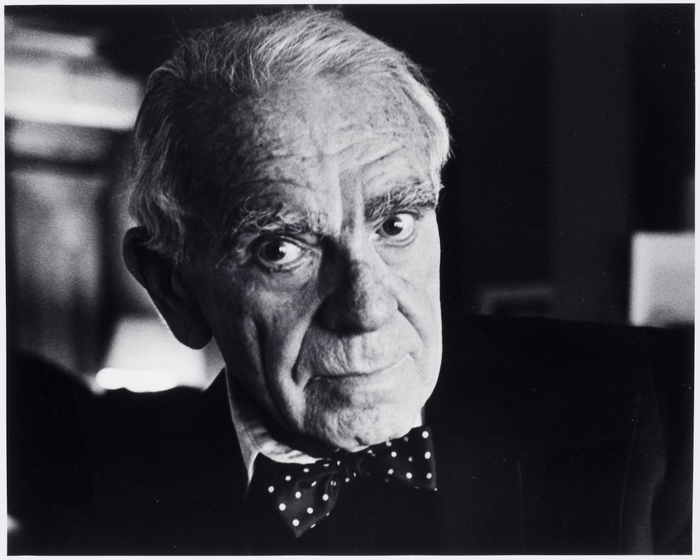
Horst Paul Albert Bohrmann is one of the most artistically and technically artist between the 1930’s and 1990’s. He became really famous for his photos which were defined as elegant, with style, glamour, the beautiful lighting and composition of his photographs. His fashion portraits were mainly black and white but he photographed a series of fashion interiors. He is best known for his work with Vogue.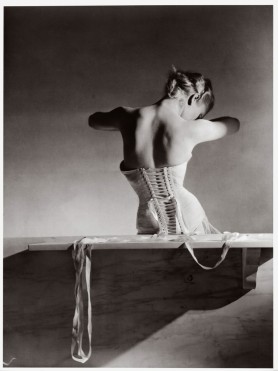
Horst was born on 14 August 1906, in Germany and he was the second son of a successful shop owner. In his teens, he developed an interest in avant-grande art and in the late 1920’s he moved to Hamburg to study and after 10 years he moved again to Paris. Here, he attended many galleries and was around a lot of people in the art community. In fact, after not too long he met the Vogue photographer Baron George Hoyningen-Huene and became his assistant. They travelled to England and while there, they visited photographer Cecil Beaton who was working for the British Edition of Vogue. Just a year after Horst published his first photograph in the French edition of Vogue and he had his first exhibition in 1932. This exhibition got Horst famous as Janet Flanner in The New Yorker reviewed this exhibition. In fact, in the same years he took a portrait of Bette Davis and after that, he had a list of celebrities he photographed, for example, Yvonne Printemps, the French singer and actress and Luchino Visconti di Madrone, the Italian screenwriter. 
In 1937 he rented an apartment in New York and there he met Coco Chanel there is where he started photographing her fashions and he did for three decades. He met Valentine Lawford in 1938, and they lived together and adopted their son Richard J. Horst.
In 1943, he joined the Army, after receiving his United States citizenship he became an Army photographer, photographing for the magazine Belvoir Castle. In 1945 he photographed United States President and he also photographed every First Lady in the post-war period at the invitation of theWhite House.
In 1960 began a series of photos illustrating the lifestyle of international high society which included people like Emilio Pucci, Paloma Picasso and many many other. These photographs were taken by his longtime companion, Valentine L. who then died in 1991. In the mid-1970s he was working for Vogue and also for House&Garden magazine. After a long and successful life and career, he died at 93 in Florida.

George Hoyningen-Huene was definitely a big inspiration for Horst and also thought him a lot but the avant-grande movement and the environment he moved into has been a real influence in his work.
His work is best known for his photographs of women and fashion, especially recognised for the iconic photos of the Twentieth-Century is “The Corset” captured in Vogue’s Paris studio in 1939. Many designers use the beauty of “The Mainbocher Corset” as an inspiration for their outerwear collections today. His work frequently reflects his interest in surrealism and beauty. His photos were technically perfect, he carefully prepared for his shoot and only rarely he used filters, which shows even more how careful he was with his lighting. I remember attending, the Horst P Horst exhibition in London years ago and I noticed that for every shoot he sketched more than 5 pages of ideas and concepts, this shows how much preparation and time he spent for each shoot. The New York Times described stated: “Horst tamed the avant-garde to serve fashion.”
Bruce Weber, who has been hugely influenced bt Horst said in a television documentary: ‘The elegance of his photographs … took you to another place, very beautifully … the untouchable quality of the people is really interesting as it gives you something of a distance … it’s like seeing somebody from another world … and you wonder who that person is and you really want to know that person and really want to fall in love with that person’.
Nigel Baker
 Nigel Barker is a well-known English photographer film-maker, TV show personality and also a former model. He was born in London but lived in America by his Sri Lankan mother and Portuguese-English father. His mum who was a professional model and also won Miss Sri Lanka was a real influence in forming his respect for the modelling profession as he grew up.
Nigel Barker is a well-known English photographer film-maker, TV show personality and also a former model. He was born in London but lived in America by his Sri Lankan mother and Portuguese-English father. His mum who was a professional model and also won Miss Sri Lanka was a real influence in forming his respect for the modelling profession as he grew up.
He attended Bryanston School where he took his A levels in Science. He wanted to continue his science studies and wanted to get into the medicine field but things changed when his mother entered him into a televised modelling contest, he ended up being a finalist and there’s when his modelling career travelling all around the world started and he was into it for 10 years. He noticed the way the models in the fashion industry had started to change so he decided to get into Fashion photography. Firstly, he opened a studio called StudioNB in Manhattan in the Meat Packing District which it is still there today. He was very successful for his photos, he used his contacts in the fashion industry very well and soon enough he was taking pictures for magazines, websites, and catalogues (Ted Baker, Nicole Miller, Sony, Ford, GQ, Seventeen etc).
 He also took pictures of celebrities that were not yet famous at the time and that got them noticed and made him even more popular. He became so popular for his photography that they called him to be a judge on America’s Next Top Model and not only he also made appearances on Canada’s Next Top Model, New Zealand’s Next Top Model, Mexico’s Next Top Model, and Benelux’s Next Top Model. In 2007, he was invited to be the judge for the Miss America Pageant and In 2012, judge of the Miss Universe pageant.
He also took pictures of celebrities that were not yet famous at the time and that got them noticed and made him even more popular. He became so popular for his photography that they called him to be a judge on America’s Next Top Model and not only he also made appearances on Canada’s Next Top Model, New Zealand’s Next Top Model, Mexico’s Next Top Model, and Benelux’s Next Top Model. In 2007, he was invited to be the judge for the Miss America Pageant and In 2012, judge of the Miss Universe pageant.
He is the executive producer of the show The Shot, which features photographers using their skills to win an ultimate grand prize. He also directed and produced A Sealed Fate, Generation Free, and Haiti: Hunger and Hope. Nigel has also shot campaigns for many charities for which he is the celebrity ambassador. (e.g. Fashion Targets Breast Cancer).
He is not only this, he is also the spokesperson for many brands like Microsoft and Sony. In 2016 he became Creative Director of “Prai Beauty” and Artistic Director of a new American brand Flag&Anthem. He has directed and produced films and commercials for Hollywood clients and he has two books.
I can say that Baker has been influenced especially by the environment he was in, the people around him and his strong interest in photography, he says: “I worked for some incredible designers, I travelled the world. I learned a lot about photography; which is my love and what I am doing now.” However, he clarifies that Richard Avedon was a big inspiration:””I’ve always been hugely influenced by Avedon, he dealt with subjects in a simplistic manner. It was all about the subjects, not about the background. (The person) became the landscape … It was them having a thought, and that was the picture.”

I think Nigel has influenced many young photographers like me, with the way he uses his knowledge and other skills he acquired in the past in his photography. That is why he always have new ideas, this is because he thinks outside the box and look for inspiration everywhere and he did not let photography technicalities stop him, even if he never studies photography when he decided to open a studio he used his basic knowledge and contacts he already made at the time. And I like the fact that he isn’t only a great photographer but also many other things.
TASK 10 Part 1
Visit the library.
Look at the latest issues of Vogue, Vanity Fair, A N Other, or
A N Other Man Magazine
Locate and copy 3 notable images that can be critiqued in
terms of: Culture, Class and Communication Critique these images on your blog
I looked at the latest issue of Vogue the British edition and selected 3 images that I could critique.
Image 1

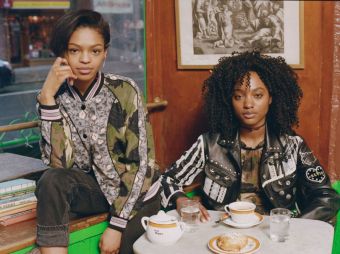
I came across these two images from the British edition of Vogue, Street style. By just looking at the images someone would deduce it is aimed at a lower class audience because of the clothing which looks very casual and the location looks like a normal not too expenses coffee shop. It feels like it is based somewhere in the neighbourhoods of New York, and the two Afro-American models and the Italian coffee shop at the back can highlight the fact that it could be in New York as the city is full of diverse culture, especially with a big Italian and Afro-American community. This is what this image could communicate but with research you understand a much more.
This image was under the subtitle “Come and hang with New York’s Cool Kids”. The pictures were taken in Greenwich Village which is in New York and an article describes the town to be like Shoreditch for Londoners.
Greenwich has always been a heaven for freethinkers. About 100 years ago, a merry band of bohemians, led by the painter John Sloan and the Surrealist Marcel Duchamp, climbed to the top of the Washington Square Arch, set off balloons and cap guns and declared that from that moment on their hood would be known as the Free and Independent Republic of Greenwich Village. Since that day many famous artists and authors have made those “free and independent” streets their home and for many years many musicians and poets, activists and painters have gone to Greenwich. It was even said that Jackson Pollock used to enjoy a cappuccino at Caffe Reggio, supposedly the first place in America to serve that now-ubiquitous drink and that’s the same bar we see at the back of the girls in the picture. For many years, Village rebels worn biker jackets and ballet flats. In fact fashion companies like Coach still continue to rock this style.
In fact this shoot was inspired by this story and it was for spring/summer 2017 collection. Knowing that it is a shoot for the brand Coach itself, changes everything, we definitely know that isn’t a low-class brand as it is expensive, in fact, the mixed-print dress itself is £550 and the reversible satin coat is £450! Additionally the two girls in the photo are Gabrielle Richardson the founder of Art Hoe Collective and Selah Marley, daughter of Lauryn Hill and granddaughter of Bob Marley. They combined the style of dressing you’d expect from those who frequent Greenwich Village with their own vintage finds.
Image 2

This is another image from Vogue related to festival dressing for summer 2017. Is probably aimed at teenagers. I think is a very casual style, which everyone can afford. In fact, I see a lot of inspiration from lower class jobs. For example the hat is inspired by fisherman hats by Fila which is a well-known but not expensive brand. The jeans denim shorts and coloured leggings are the fashion between teenagers now. The shirt looks really simple and also the backpack even if we can’t see it can symbolise simplicity and comfortably. The photographer and stylist made their subject look really simple and in comfortable clothes, she has messy hair and the hat on. They also shot this on location, outside in a place really makes you think she is off to a festival.
Image 3

Alexa Chung is known for her trademark cool-girl aesthetic. She creates styles which are for high-class women but street style. The clothes have the perfect balance between high-end and high street. You can tell it has been influenced a lot by menswear.




